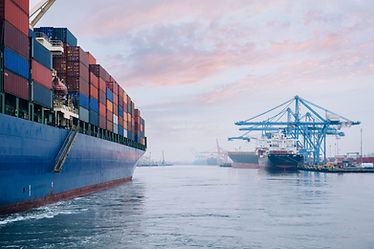Attackers are not “Staying Home” – the NMLEA Response
- Mark DuPont
- May 6, 2020
- 3 min read

Cyber attackers are not “staying home” during this pandemic. In fact, they are getting more aggressive as more companies, organizations, and individuals are deploying their workforces and workflows remotely onto the digital frontier. Adversaries are using the virus to go viral.
To quote a Department of State Update on Cybersecurity Threats and Prevention in the Current COVID-19 Environment “if you are wondering, are cyber attacks slowing down in this environment with COVID-19, they are not. In fact, they are increasing.” In the update Mr. Edward Stroz, Co-President of Aon Cyber Solutions and former Special Agent with the FBI, reports seeing “a five-fold – that would be five times – increase in the types of cyber crime.”
Right now, it is easy to see how our focus may be away from the cybersecurity front… which is what the attackers are seeing, too. “During pandemics, organizations are focused on employee health and business continuity,” says Richard Addiscott, Senior Director Analyst, Gartner. “Take preemptive steps to ensure the resiliency and security of your organization’s operations as attackers seek to exploit human nature and nonstandard operating modes.”
At the NMLEA, we too see the threat and the increased attacks happening within the maritime environment and throughout our national infrastructure. Having recognized NetFoundry as a STAR Product, the Academy is working with them to provide FREE set-up of a Zero Trust Network for maritime organizations that need it.
What is a “Zero Trust Network” you ask?
The Zero Trust concept was founded by John Kindervag, a former analyst at Forrester Research, and it basically is built upon the premise that organizations want a more reliable way of preventing leaks of confidential data and lowering the risk of modern cyber-attacks against their network.
And because the majority of businesses use traditional security architecture that functions on the theory that anything which is contained within their own network can be considered trustworthy, the reason for Zero Trust Networks is growing exponentially. Especially when you consider our increasing remote connectivity, and increasing attack surface, and the fact that security threats can arise internally and with even more penetration intelligence than ever before.
Dr. Chase Cunningham became Kindervag's successor as a Principal Analyst at Forrester in championing a Zero Trust Access approach. "Zero Trust is what's entailed in those two words, meaning trust nothing, don't trust password management, don't trust credentials, don't trust users, and don't trust the network," Cunningham told PCMag at the Zero Trust Summit.
Put simply, a Zero Trust Network is a means of securing the connection between one point to another point, and allowing only those people with specific purpose to access only those things that are specific to them. In this maritime world of hundreds of connections and applications, it is much easier to create the Zero Trust Network, than it is to build all the security measures internally around the digital infrastructure. So easier, that a Zero Trust Network can literally be set up in minutes.
Get a Zero Trust Network for FREE, up until July 2020.
Yup. You read it right. NetFoundry, in service to our community and the maritime domain in particular, have offered to establish FREE Zero Trust Networks through the NMLEA. Contact us by clicking here, and learn more about how you can have a Zero Trust Network set up for FREE.
To learn more about NetFoundry as a STAR Product, click here. Remember, attackers are not “Staying Home”. They are going viral during this virus.









Comments